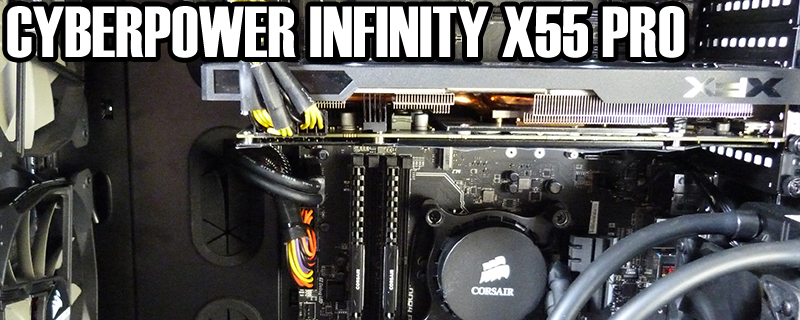Cyberpower Infinity X55 Pro System Review
Conclusion
Any fool can build a system of great power by throwing money at it. There is nothing big or clever about getting a good gaming system for 10K. The trick is managing to finesse the sweet spot and get the maximum possible hardware from the minimum possible investment.
Of course you could just go down the old “Internet ready” route if that were the case, but the days are long past when that cut any mustard with all but the most ill-informed buyers. The real money is to be made in producing a gaming system that truly can cope with all of the modern titles at sensible resolutions and do so for under a four figure price tag.
The guys and gals at Cyberpower have ably done this with the Infinity X55 Pro. Barring one item, which we’ll get to, the selection of components is right on the money, and this is borne out by the excellent results we saw throughout our testing. Whether it is the raw calculations of CineBench R15, the all-around daily life tasks replicated by PC Mark 8, or just the polygon crunching, enemy killing fun of our gaming suite, the Infinity X55 Pro came up trumps every time. The combination of the Intel Core i5 CPU, heavily overclocked on this system, and the XFX R9 390 produce fabulous results across the board. Backing this up with the speedy Corsair Neutron FX SSD and enough RAM for all but the most power hungry has given a system which truly can be classed as a gaming rig, yet only costs £999.
Cyberpower advertise this as part of their VR-Ready range, and whilst benchmarking VR systems isn’t something anyone can do yet  and actually generate some results for a graph, in all of our games, and the theoretical ones courtesy of Unigine and the various 3D Marks, show that this claim is not one made up of surfing the zeitgeist, but rather one based in fact. We’re testing at 1080P for the sake of convenience, and at that resolution you can just whack every setting up to the stops, but we’re sure that with some careful image quality choices 1440P isn’t beyond the scope of this rig. Anyone expecting to run 4K gaming on a sub-£1000 system should manage their budget better and not spend a fortune on a big monitor.Â
If there is one area we’d change it would definitely be the Corsair 600C Inverted case. It’s not that it’s a bad case as such, Corsair ones rarely are, but that there are no benefits to be found from having it upside down and, given how many of us have our systems on our right because of the window, if anything it’s just a downside. This is further highlighted by the difficulties in cable management so obviously apparent. Thankfully Cyberpower provide a whole host of cases you can pick from on their website, with price adjustment to take this into account. Beyond that it might be worth springing for the extra 8GB of RAM to take it to 16GB, but again this is dependant upon your usage. For raw gaming 8GB is absolutely loads.
It’s built well, there were no issues at all during testing, it doesn’t come with unexpected bloatware installed and even under the very harsh loading of Unigine Valley or Fire Strike Extreme it never got too loud either. For the money you’d have to invest a lot of time in it to try and do better, and honestly if you try to buy the hardware at current prices you’d struggle to build it yourself for less, and as a gaming system that isn’t just a one trick pony we award the Cyberpower Infinity X55 Pro our OC3D Gamers Choice Award.
You can discuss the Cyberpower Infinity X55 Pro Review in the OC3D Forums.





